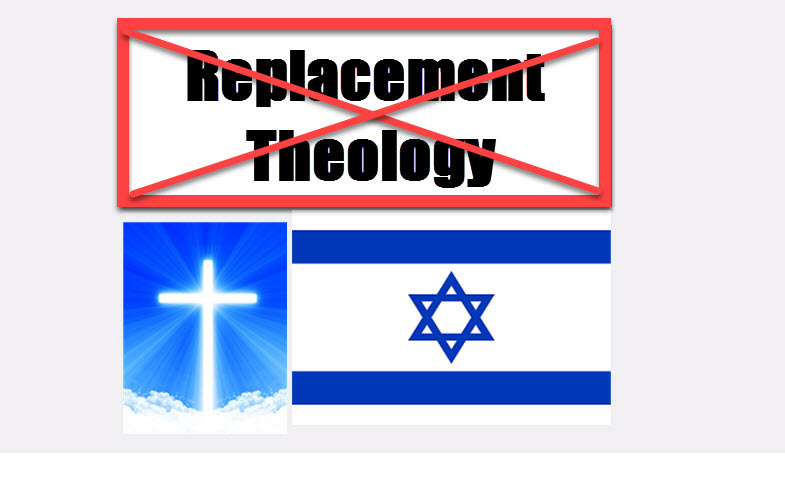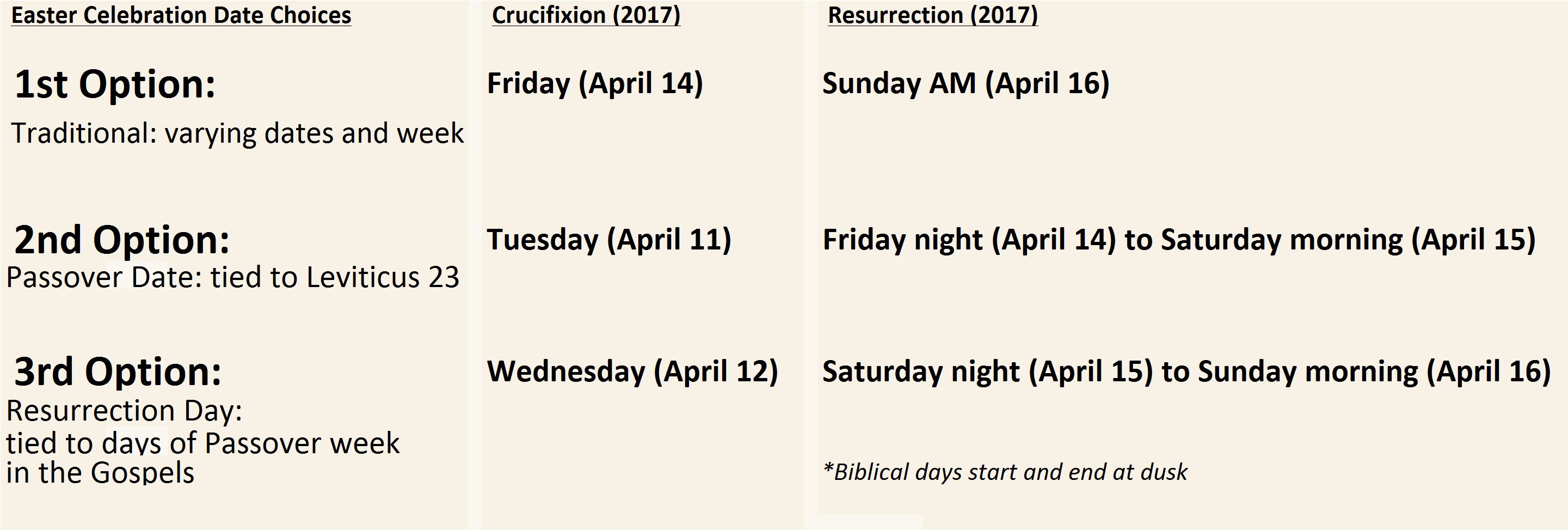Isn’t it supposed to be for 3 days and 3 nights?
When celebrating Easter, which of the 3 options should we base it on? Tradition, Biblical calendar date, or Biblical day of the week? Confused? Read on!Â
We think we can all agree that “Easter†or “Resurrection Day†is all about Jesus and how God didn’t want His people to any longer be satisfied with just rituals and tradition, but to have a close relationship with Him.
What if by just following “Traditionâ€, we miss out on some important background aspects of “why†and “what†Jesus was doing prior to this critical event! Context of the story. And confusing the very proof that Jesus foretold that would demonstrate who He was and is?
The Proof & Sign:
When asked for a sign of his resurrection, Jesus said the only sign we would have is in Matthew 12:38-40: “For just as Jonah was three days and three nights in the belly of the great fish, so will the Son of Man be three days and three nights in the heart of the earth†Sounds like an important sign to Jesus right?
As the Bible directs, Jesus was in Jerusalem for the celebration for Pesach (Passover) see John 13, as the anniversary of the day the God of Israel delivered them out of Egyptian bondage. (Have you watched the Ten Commandments movie?) The “Last Supper” referred to in Christianity was actually the Hebrew Pesach (Passover), the first day of what is known as the Feast of Unleavened Bread which lasts for seven days in Leviticus 23:6-7.
Tradition’s Biggest Challenge:
One of the biggest challenges with the traditional observation of Easter is that, in distancing itself from the Biblical origin, it confuses what Jesus said is the only sign given to validate His anointing “would be the sign of Jonah who was in the belly of the whale for three days and three nightsâ€. Easter’s traditional observance reduces that time to two days and two nights – from Good Friday to sunrise Easter Sunday morning.
- Does it really matter?
- Does truth and accuracy in following the Bible matter?
Click below:
There are three (3) main options for selecting when Easter occurred and specifically for 2017. (see below)
So, what really happened?
A more likely actual sequence consistent with the Lord’s promised sign to prove who he is consistent with both Old and New Testament could be as follows:
Jesus became the Passover sacrifice, having been slain on the eve of the 14th of Hebrew month Nisan (Leviticus 23:5) according to scriptural requirements, had His Body prepared and laid in the tomb before sunset.
First Day – the 15th, the evening and morning of the first day of the Feast of Unleavened Bread, a high, holy convocation (a mikra) treated like a Sabbath, but not a Shabbat. This is the first night and first day.
Second Day – the 16th, the evening and morning of the second day of the seven day Feast of Unleavened Bread (not a high day to be treated like a Sabbath) so that the spices and ointments thought to be needed for a second anointing of Jesus ‘s Body can be prepared ‘according to the commandment’ that no servile work be done on either a mikra or a Shabbat. This is the second night and second day.
Third Day – the 17th, the evening and morning of the weekly Sabbath in which entering into His Rest is commanded for all. This is now the third night and the third day.
Fourth Day – the 18th, Jesus arose from the grave on the first day of the week (at sundown after the Sabbath ended, after three full days and three full nights and thus fulfilling the sign of Jonah),
What Are Biblical Days and Dates?
Is something wrong with Jesus’s words, or is it with tradition made of men? To begin with, biblical days start and end at dusk and there are no names for the days of the week in the Tenakh (“Old Testamentâ€) they are simply referred to as the first day, the second day, etc.
All the names in the Bible employed for days of the week are approached from the standpoint of Sunday being the first day of the week on the Gregorian/Julian calendar which was not invented until hundreds of years after the Resurrection of Jesus.
Concluding thoughts:
Christians are free to follow the traditional chronology of Jesus’s crucifixion & resurrection of Good Friday to sunrise Easter Sunday morning. However, an awareness of biblical accuracy and consistency (old and new testaments- books) can be beneficial to advancing our own faith and in sharing The Truth with others. Thank Jesus for Your sign which confirms who You said You ARE!!!
Like this article? Like us on Facebook!


